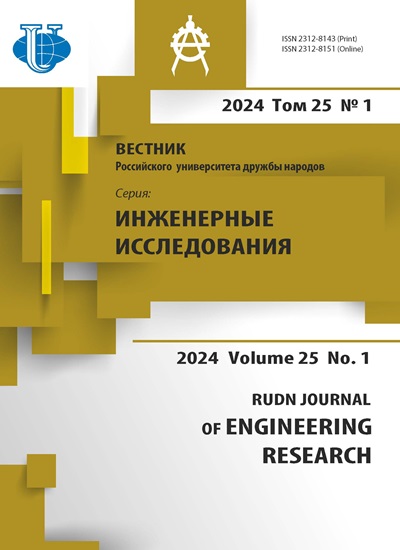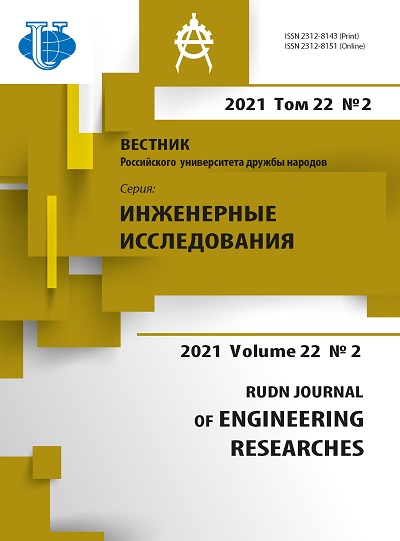Synthesis of a mobile robot spatial stabilization system based on machine learning control by symbolic regression
- Authors: Diveev A.I.1, Mendez Florez N.J.2
-
Affiliations:
- Federal Research Center “Computer Science and Control” of the Russian Academy of Sciences
- Peoples’ Friendship University of Russia (RUDN University)
- Issue: Vol 22, No 2 (2021)
- Pages: 129-138
- Section: Articles
- URL: https://journals.rudn.ru/engineering-researches/article/view/27545
- DOI: https://doi.org/10.22363/2312-8143-2021-22-2-129-138
Cite item
Full Text
Abstract
The spatial stabilization system synthesis problem of the robot is considered. The historical overview of methods and approaches for solving the problem of control synthesis is given. It is shown that the control synthesis problem is the most important task in the field of control, for which there are no universal numerical methods for solving it. As one of the ways to solve this problem, it is proposed to use the method of machine learning based on the application of modern symbolic regression methods. This allows you to build universal algorithms for solving control synthesis problems. Several most promising symbolic regression methods are considered for application in control tasks. The formal statement of the control synthesis problem for its numerical solution is given. Examples of solving problems of synthesis of system of spatial stabilization of mobile robot by method of network operator and variation Cartesian genetic programming are given. The problem required finding one nonlinear feedback function to move the robot from thirty initial conditions to one terminal point. Mathematical records of the obtained control functions are given. Results of simulation of control systems obtained by symbolic regression methods are given.
About the authors
Askhat I. Diveev
Federal Research Center “Computer Science and Control” of the Russian Academy of Sciences
Author for correspondence.
Email: aidiveev@mail.ru
SPIN-code: 5726-6572
Chief Researcher, Doctor of Technical Sciences, Professor
44/2 Vavilova St, Moscow, 119333, Russian FederationNeder Jair Mendez Florez
Peoples’ Friendship University of Russia (RUDN University)
Email: nederjair@gmail.com
Graduate Student at the Department of Mechanics and Mechatronics, Engineering Academy
6 Miklukho-Maklaya St, Moscow, 117198, Russian FederationReferences
- Bellman R, Glickberg I, Gross O. Some Aspects of the Mathematical Theory of Control Processes. Rand Corporation. Santa Monica, California; 1958.
- Bellman R, Kalaba R. Dynamic Programming and Modern Control Theory. New York London Academic Press; 1966.
- Bellman RE, Dreyfus SE. Applied Dynamic Programming. Princeton, New Jersey: Princeton University Press; 1962.
- Letov AM. Analytical design of controllers. I. Automatica I Telechanika, 1960;21(4):436—441. (In Russ.)
- Pontryagin LS, Boltyanskii VG, Gamkrelidze RV, Mishchenko EF. The Mathematical Theory of Optimal Processess. Ed. 4. Moscow: Nauka Press; 1983. (In Russ.)
- Boltyanskii VG. Mathematical Methods of Optimal Control. Holt, Rinehart & Winston in New York; 1971.
- Khalil HK. Nonlinear Systems. New York: Prentice Hall; 2002.
- Kolesnikov AA. ADAR Method and theory of adaptive control in the tasks of synthesis of the nonlinear control systems. Mechatronics, Automation, Control. 2017;18(9):579—589. doi: 10.17587/mau.18.579-589
- Koza JR. Genetic Programming: On the Programming of Computers by Means of Natural Selection. Cambridge, Massachusetts, London, MA: MIT Press; 1992.
- Diveev AI, Sofronova EA. Numerical method of network operator for multiobjective synthesis of optimal control system. In: 2009 IEEE International Conference on Control and Automation, ICCA 2009. Christchurch; 2009. р. 701–708. doi: 10.1109/ICCA.2009.5410619
- Diveev A. A Numerical Method for Network Operator for Synthesis of a Control System with Uncertain Initial Values. Journal of Computer and Systems Sciences International. 2012;51(2):228—243.
- Diveev A. Chislennye metody resheniya zadachi sinteza upravleniya [A Numerical Methods for solution of Control Synthesis Problem]. Moscow: Peoples’ Friendship University of Russia Press; 2019. (In Russ.)
- Duriez T, Brunton SL, Noak BR. Machine Learning Control—Taming Nonlinear Dynamics and Turbulence. Part of the Fluid Mechanics and Its Applications book series (FMIA, vol. 116). Springer Publ.; 2017. doi: 10.1007/97-3-319-40624-4
- Diveev AI. Metod setevogo operatora [The Network Operator Method]. Moscow: Dorodnitsyn Computing Center Press; 2010. (In Russ.)
- Miller J, Thomas P. Cartesian Genetic Programming. In: Poly R et al. (eds.). Proceedings EuroGP’ 200R. 3-rd European Conference genetic Programming (vol. 1802). Edinburgh, Scotland, Berlin: Springer-Verlag; 2000. р. 121—132. doi: 10.1007/978-3-540-46239-2_9
- Diveev A. Small Variations of Basic Solution Method for Non-numerical Optimization. IfacPapers-OnLine, 2015;48(25):28—33. doi: 10.1016/j.ifacol.2015.11.054
















